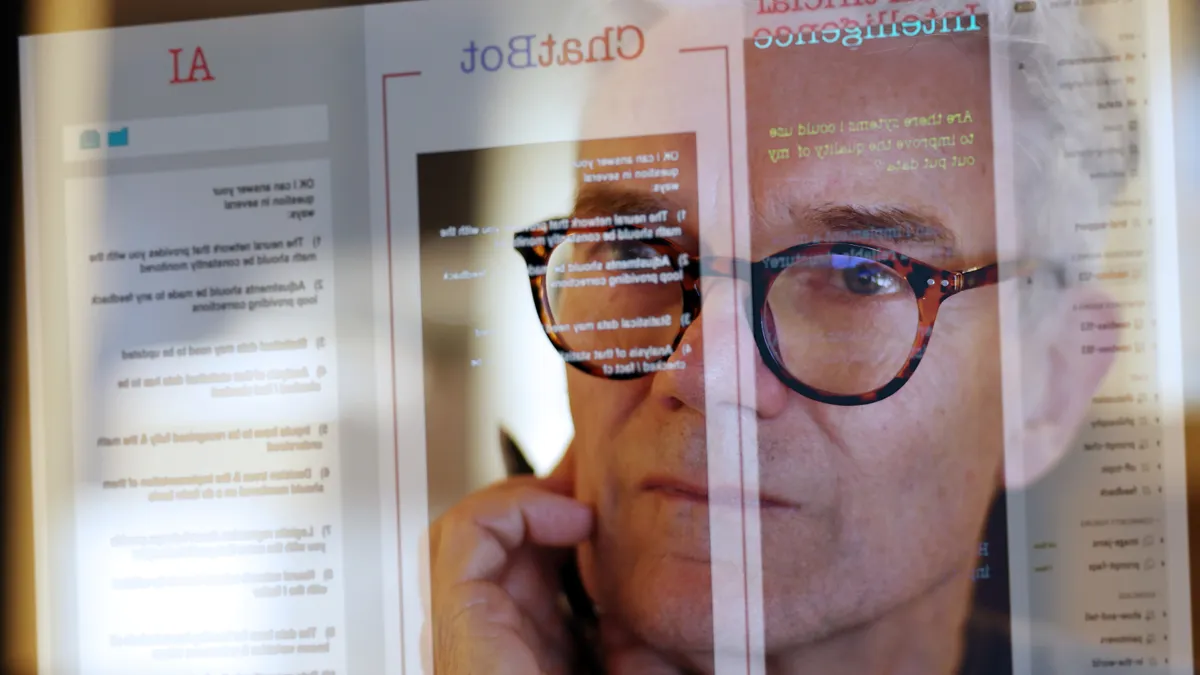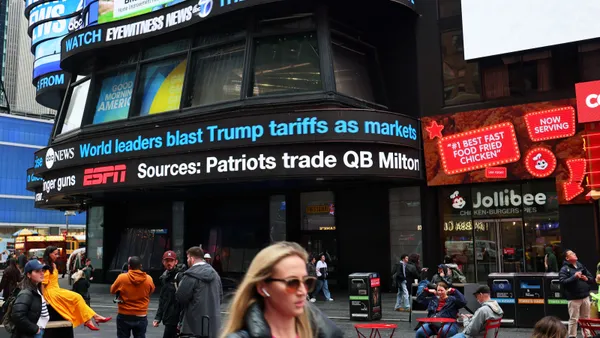Dive Brief:
- Artificial intelligence-related job ads are on the rise again — comprising 2% of job postings at the end of February 2024 — after bottoming out last year from their peak of 3.3% in March 2022, according to Indeed’s research arm, Hiring Lab.
- Hiring Lab attributed the increase to a rise in AI-related share of software development jobs, Hiring Lab reported in a Mar. 14 analysis: At the end of February, almost a quarter (22%) of postings in software development were AI-related, up from 19% in June 2023, it found.
- “The short-term outlook for AI jobs will likely remain tied to the overall tech market,” Indeed’s Economic Research Director of North America Nick Bunker wrote, “and a larger increase in the AI share will require a broader rebound in tech job postings as a whole.”
Dive Insight:
Excitement is swirling around generative AI; the tech tool that can produce text, images and audio and burst on the scene in late 2022, Bunker noted.
Although still a very small share of U.S. jobs, the demand for generative AI-related talent has soared over the past 14 months, from 3 in 100,000 postings in January 2023 to 11 in 10,000 postings as of the end of February 2024, an increase of more than 30-fold, Hiring Lab found.
More broadly, though, the AI labor market is deeply connected to the tech labor market, and postings for tech-related jobs overall are depressed, Bunker pointed out. Even so, while the tech labor market might not be rebounding, Hiring Lab’s data suggests employers “are starting to pivot back toward AI jobs,” Bunker wrote.
And job seekers are responding. Postings that mention generative AI and AI have seen a 17% increase in interest in the past two years, according to a recent report from LinkedIn. Candidates are savvy and want to go where the opportunities are, a LinkedIn exec said in the report.
Indeed’s Hiring Lab played down speculation that generative AI may change or eliminate jobs in the near future as the tech improves: “At the moment, Hiring Lab research suggests GenAI is more likely to augment certain roles rather than fully replace them,” Bunker said.
But employers still need to prepare for the way generative AI will profoundly shift work, productivity and economic growth, according to a January report by technology advisory firm Cognizant.
By 2032, more than half of all jobs are predicted to significantly change as generative AI is integrated into automated tasks, Cognizant’s analysis found. As a result, nearly 1 in 10 of the current U.S. workforce could be displaced, and 1% of displaced workers may struggle to find new employment, according to the firm’s research.
As employers increasingly adopt AI, reskilling employees is likely to fall in HR’s jurisdiction, a February report from the Society for Human Resource Management and the Burning Glass Institute emphasized. For example, headcounts are predicted to shift away from tasks that have been automated and toward AI-augmented responsibilities, the report explained.
CHROs will also want to make sure that displacement doesn’t disproportionately affect underrepresented groups and that new opportunities are available to a diverse pool of talent, the report noted.













